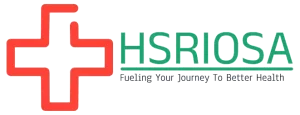Achieving your fitness goals doesn’t have to be a slow and frustrating process. When you optimize your training plan, you can make faster progress and achieve your goals much faster. The most important thing is to understand how to train smarter, not harder, by using strategies that will maximize your efficiency, speed up recovery, and keep you motivated. Let’s find out how
Set Clear and Actionable Goals
Before optimizing your workouts, take some time to set clear goals. When you know exactly what you want to achieve, it will help you stay focused and see if you’re making any progress.
- Be Specific: Instead of setting goals like “get fit,” aim for something more specific like “run a 5K in under 25 minutes” or “increase my bench press by 10 pounds in two months.”
- Track Progress: Use a fitness journal or app to log your workouts, track your stats, and celebrate milestones.
Setting your goals is an easy way to stay focused and to see how much progress you’re making.
Follow a Structured Training Plan
A well-organized training plan will ensure that you’re covering all important aspects of fitness—strength, endurance, mobility, and recovery. Without a structured plan, you risk overtraining, plateaus, but also missed opportunities for improvement.
- Include All Fitness Pillars: Strength training, cardiovascular conditioning, and flexibility/mobility work should all be part of your routine.
- Use Periodization: Break your training into cycles that focus on different goals, such as building strength, improving endurance, or peaking for a specific event.
- Progressive Overload: Gradually increase the intensity, volume, or difficulty of your workouts to challenge your body and promote growth.
A structured plan is important to make sure that you’re making continuous progress.
Master Exercise Technique
Doing exercises with proper form is a must if you want to have big results but to also avoid injury. Poor technique not only limits your progress, but also puts unnecessary stress on your joints and muscles.
- Start Slow: If you’re new to an exercise, focus on mastering the movement with lighter weights or lower intensity.
- Seek Guidance: Work with a coach or watch credible tutorials to learn proper form.
- Use Mirrors or Videos: Check your alignment and adjust as needed.
Prioritizing form over weight or speed is important for long-term success and safety.

Prioritize Recovery for Faster Gains
Recovery is where the muscle is built. Your body repairs and grows stronger during rest, not during the workout itself.
- Sleep Matters: Aim for 7–9 hours of quality sleep to speed up recovery and energy levels.
- Hydrate and Refuel: Drink water throughout the day and eat balanced meals rich in protein, healthy fats, and complex carbohydrates.
- Use Active Recovery: Light activities like stretching, walking, or yoga can boost circulation and reduce muscle soreness.
- Consider Using Supplements: Certain supplements like Omega 3 Fatty Acids and Peptide BPC-157 are known for reducing muscle soreness and promoting faster recovery.
If you’re unsure about the right dosage of peptides, which can be complicated to understand at first, then try using peptide calculator mg.
Mix Up Your Routine
Doing the same workouts over and over again can lead to plateaus and boredom. Introducing variety in your workouts not only keeps things exciting but also challenges your body in new interesting ways.
- Try New Workouts: Try out fun activities like swimming, cycling, or HIIT to target different muscle groups and energy systems.
- Change Intensity: Alternate between heavy lifting, high-rep circuits, or interval training.
- Cross-Train: Engage in different forms of exercise to improve overall fitness and reduce the risk of overuse injuries.
Motivation is a big part of your workout journey, and adding fun exercises here and there can boost your motivation and help you to train harder.
Leverage Technology and Tools
Technology can be a game-changer in optimizing your workouts. From tracking your progress to helping you master your form, there’s a tool for almost every aspect of fitness.
- Wearable Devices: Fitness trackers and smartwatches monitor metrics like heart rate, steps, and calories burned.
- Apps and Online Programs: Use apps for workout plans, tracking, and even virtual coaching.
- Form-Correcting Devices: Some wearables provide feedback on your posture and movement during exercises.
Using technology can definitely save you a lot of time, and make your fitness journey much more simple.
Focus on Nutrition
Your diet plays a very important role in how quickly you see results. Food is the fuel that powers your workouts and the building blocks for recovery.
- Pre-Workout Nutrition: Eat a mix of carbs and protein 1–3 hours before training to ensure sustained energy.
- Post-Workout Recovery: Refuel with protein to repair muscles and carbohydrates to replenish energy stores.
- Stay Balanced: Prioritize whole, nutrient-dense foods like lean proteins, healthy fats, and fiber-rich carbs.
Eating the right nutrients is important for all aspects of your fitness, and is one of the most important things that will help you to make progress.
Monitor and Adjust Your Plan
Fitness is a journey, and what works today might not work forever. Regularly assess your progress and adjust your plan as needed.
- Listen to Your Body: If you feel fatigued or notice decreased performance, it might be time to scale back or tweak your routine.
- Set Mini-Goals: Break your larger goals into smaller milestones to stay motivated.
- Be Flexible: Life happens—if you miss a workout, don’t stress. Just get back on track the next day.
Listening to your body is important as it is a great indicator that you’re making progress without risking burnout or some serious injury.
Stay Consistent and Patient
Consistency is still the most important factor in achieving fitness success. While you should look to chase quick fixes, real progress will come from sustained effort over time.
- Create Habits: Build fitness into your daily routine, whether it’s a morning workout or an evening yoga session.
- Celebrate Progress: Recognize your achievements, no matter how small, to stay motivated.
- Embrace the Journey: Remember that fitness is a lifestyle, not a destination.
Remember that patience and dedication will always pay off, so giving your best is the key to success.
Surround Yourself with Support
Having people who share similar goals or interests as you will naturally increase your competitiveness and drive.
- Workout Partners: Exercising with friends can make workouts more enjoyable and keep you accountable.
- Join a Community: Whether it’s a local gym or an online group, connecting with like-minded individuals boosts motivation.
- Seek Professional Guidance: Personal trainers or coaches can help tailor your program to your goals and provide valuable feedback.
Having people who are on the same journey as you will inspire you to achieve goals faster.
Final Thoughts
Optimizing your training for faster fitness progress is all about strategy, consistency, and balance. By setting clear goals, following a structured plan, prioritizing recovery, and maintaining proper nutrition, you can make significant strides toward your fitness aspirations. Remember, the journey is just as important as the destination, so enjoy the process, stay committed, and celebrate every step of progress along the way!




